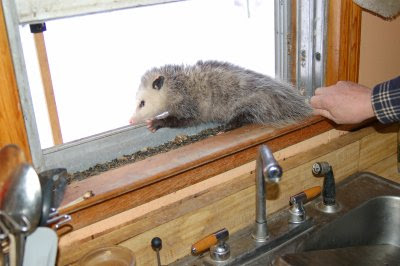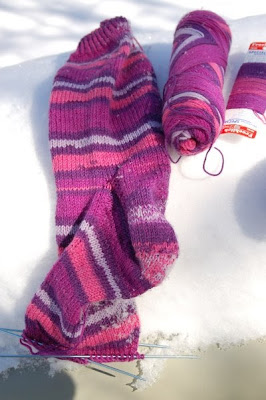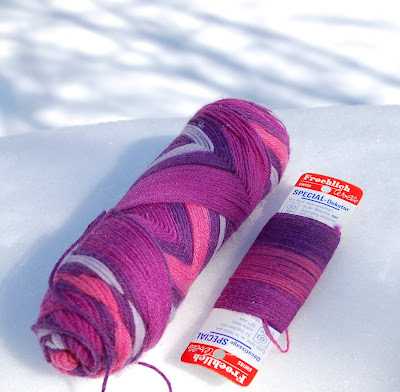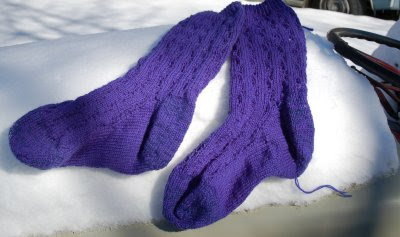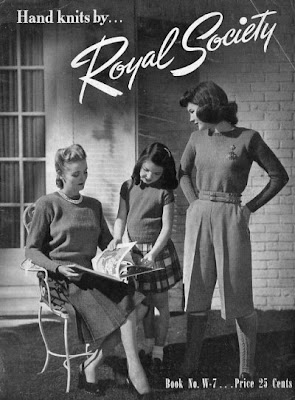
I hear a backlash brewing against all the hip new knitting books and magazines. Check out "Stop Insulting My Grandmother" from Rosieblogs: The Official Blog of Rosie's Yarn Cellar.
There must be 500 new knitting books being published this Spring. And 475 of them have the word "young," "cool," "hip," or "easy" in the title....We're sick of people claiming that what they do is "not your grandmother's knitting," as if there was something wrong with our grandmother's knitting. Hey, publishers--stop insulting my grandmother....Eve Plotnick and Dorothy Myers were women of skill, patience, resourcefulness, and creativity.
Kim at String or Nothing speaks out with uncharacteristically harsh language in Brain Dead In the Book Aisle.
I detest the majority of knitting books published over the last three years....the attitude, the contents, the presentation...there are intelligent, well-written books out there for beginners. You can usually find them by avoiding key words in the titles....I'm not interested in simple, hip, trendy, urban-gritty, easy, shortcuts, weekend, boxy, cropped, giant-gauge, flash, dummies, or quick.
Clearly, there is a down side to buying for a yarn shop or writing knitters' product reviews: it'll get you all riled up. I don't look at these books or follow magazine trends. I can visit knitters' blogs (for free) if I want to see what the kids are doing these days, but mostly, I look through my grandmother's and mother's knitting leaflets (1930's through 1960's). Socks, sweaters, mittens, and hats--whenever I've moved beyond these basics, the projects have languished unused in a clothes closet (until I unraveled them and put the yarn back into stash storage). The patterns in this "Royal Society" brand brochure would look just as nice now as they did in 1946, when they were published. Notice the price--25 cents. It's actually crossed out in pencil, and "12 cents" is handwritten in. My mom always shopped for bargains.
